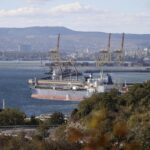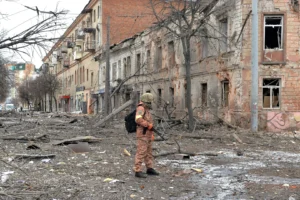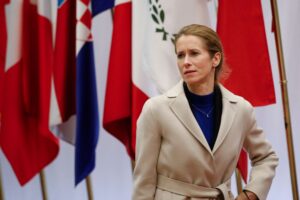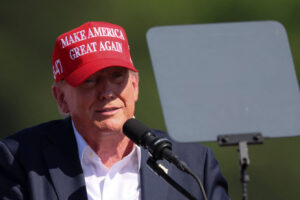Rogelio Granguillhome, Mexico’s ambassador to Belgium and Luxembourg, gave an interview to talk about the essential good relationship between Mexico and the European Union.
Mexico and the European Union (EU) are two essential partners that are increasingly expanding their cooperation, trade and investment ties. Their relationship has solidified over time.
Last July, an important EU summit with Latin America and the Caribbean (CELAC) took place in Brussels after eight long years of not taking place, marking a frank and open dialogue between two regions that have many interests in common, as Rogelio Granguillhome, Mexico’s ambassador to Belgium and Luxembourg, remarked in an interview.
In the opinion of the Mexican ambassador to the Kingdom of Belgium and the Grand Duchy of Luxembourg, the holding of a meeting of this magnitude between two regions that have many issues that occupy and concern both sides is great news.
“The summit concluded with the adoption of a regional declaration adopted by consensus; only one delegation expressed an objection, but this declaration expresses the will of both regions to defend multilateral fora and international peace and security. The war in Ukraine was condemned, special emphasis was placed on the situation in Haiti, the peace process in Colombia, the situation in Venezuela and the lifting of the embargo on Cuba,” explained Granguillhome.
The diplomat is also head of Mexico’s Mission to the EU, so he has played an important role in the most recent meeting and knows the subject of negotiations and exchanges in the area of cooperation between Mexico and the EU inside out.
“At the summit, a broad agenda was addressed in terms of combating climate change; the security of citizens was discussed, as well as how to expand cooperation,” he said.
The EU and Latin America and the Caribbean represent more than a third of the UN membership and are a force for a rules-based multilateral order.
It is also the region with the closest formal ties with the EU, having association, trade or political and cooperation agreements with 27 of the 33 countries in Latin America and the Caribbean. The EU is the leading investor in the region and its third largest external trading partner, and together they move more than 235 billion euros in trade.
We have seen that the EU has even invited delegations from countries that it has singled out and sanctioned, such as Venezuela, Cuba, Nicaragua, what do you think?
It seems to me that the EU has been generous in inviting these countries because it has shown that it has an inclusive approach because Brussels is interested in a broad exercise in political dialogue. And in my view the EU has definite plans and programmes with all countries.
Will there be another EU-CELAC meeting next year?
One of the great achievements of the summit was the holding of the summit itself because it is based on the recognition of both regions to strengthen their bi-regional dialogue channels and mechanisms in a systematic way. Of course, more regularity is needed: the leaders, through the summit, give a mandate to the EU and CELAC to encourage more meetings, more contacts and exchanges to promote dialogue in all areas.
Although there is no precise date for a new EU-CELAC meeting, Granguillhome stressed that the Spanish Presidency of the European Council, throughout this second half of the year, is playing a very important role in promoting links of all kinds, “pulling the rest of the EU” towards greater activism with Latin America and the Caribbean.
To date, the EU has an intense list of pending trade treaty issues: with Mercosur, a political agreement was reached on 28 June 2019 to establish an inter-regional trade agreement that has never entered into force because it has not been voted in the European Parliament, partly because it is opposed by more than a dozen EU member states.
With Chile its new modernised trade agreement is yet to enter into force, and with Mexico the date on which the new modernised comprehensive agreement will be signed is also pending.
For the time being, there is no clear date for signing the EU’s trade agreements with Chile; with Mexico and Mercosur, what is being announced are investments through the Global Gateway.
One of the great achievements of the summit was the launch of the Global Gateway initiative, with the EU announcing the availability of a little over 45 billion euros for development and infrastructure projects in the countries of Latin America and the Caribbean.
It has been, Granguillhome says, a successful European initiative: “It tries to promote priority projects and projects of interest, for example, for Mexico four very important projects were identified that have to do with the Sonora Plan; with the health sector; water and sanitation; and green bonds”.
In the framework of the EU-CELAC summit, Ursula Von der Leyen, President of the European Commission, announced several projects that will benefit from Global Gateway investments: “Some 430 million euros to promote sustainable development in the Amazon; also investments in sustainable forestry programmes, clean and renewable energy infrastructures”.
Von der Leyen announced that there will be investments to trigger the production of green hydrogen in Brazil, Argentina, Chile and other countries because the Europeans have the objective of importing 10 million tonnes of renewable hydrogen each year from 2030 onwards.
For the time being, under this investment umbrella, the EU and Chilean President Gabriel Boric signed an agreement on copper and lithium during the meeting in Brussels, with the intention of boosting the production of both inputs in the Andean country and thus helping to reduce European countries’ dependence on Chinese imports of these materials.
The EU will provide Chile with resources in order to trigger local production chains and then help the Andean country to have the appropriate channels for exporting them. Chile has the world’s largest lithium reserves in its salt lakes in the Atacama Desert and is also the world’s largest producer of copper, two essential metals for making electric car batteries; it has also signed investments with Argentina for lithium production.
For Mexico, adds Ambassador Granguillhome from his office in Brussels, there is much interest in attracting Global Gateway investments in the area of the inter-oceanic corridor, which is a very important project.
Do you have the perception that the EU is more interested than ever in recovering its ties with LA, especially given China’s presence in the region?
There is this perception derived from the war in Ukraine and its effects; there is this perception derived from the distortions that the behaviour of some industrial chains are having at the global level; there is this perception based on the distortions in supply chains at the global level and the interest or motivation that the EU itself may have to rely on the industrial processes in Latin America.
For Granguillhome, the motivation lies in building strengthened and revitalised trade and investment agreements: ‘I believe that the interest is mutual, I have always seen it that way. If we are considering strengthening bi-regional ties, it is because Latin America and the European Union want it”.
“I am convinced that greater competitiveness and efficiency, for example, in Mexico’s manufacturing sector, requires greater industrial complementation with Europe; and I am convinced of this, and I believe that regardless of the fact that the EU’s political discourse increasingly emphasises Latin America’s participation, it is in our interest as a region to be increasingly closer to the EU for the benefit of our industrial interests, our own development strategy, economic, trade, investment and employment policies,” he said.
Granguillhome has extensive diplomatic experience, having been Mexico’s ambassador to Germany, Uruguay, South Korea, India and Singapore, and now to Belgium and the Grand Duchy of Luxembourg. From his perspective, the Global Gateway initiative will allow Latin America to initiate many projects with investments that will make the region more efficient and competitive.
“The Global Gateway initiative is a new way of looking at trade relations and cooperation based on an agenda that has been agreed at the summit and in which more than 110 investment projects are present throughout the region, including Mexican projects,” he said.
What is the Global Gateway? It is an investment plan guided by six basic principles: 1) democratic values and high standards; 2) good governance and transparency; 3) equal partnerships; 4) green and clean projects; 5) focused on security; and, 6) oriented to stimulate the private sector.
“Global Gateway is an EU initiative launched by the European Commission and the High Representative of the Union for Foreign Affairs and Security Policy on 1 December 2021. The aim is to invest a sum of up to 300 billion euros in the digital, energy and transport sectors between 2021 and 2027 and to strengthen health, education and research systems in emerging and developing countries and globally,” Von der Leyen said during the summit in Brussels last July.
Mexico is interested in accessing Global Gateway funding, according to foreign minister Alicia Bárcena, because the Sonora Plan is above all a clean energy project in the north of the country.
According to Gautier Mignot, the EU ambassador to Mexico, “Plan Sonora is one of the investment projects that the EU will support and promote, and this has been contemplated within the framework of the meeting in Brussels with the authorities present”.
What does Plan Sonora consist of? It consists of promoting a series of new industries in the north of Mexico based on principles of sustainability and dedicated to the generation of clean energy, the promotion of photovoltaic plants and the production of lithium.
“The Sonora Plan is one of the main projects of President López Obrador’s government for the sustainable development and generation of renewable energies in Mexico, which includes the extraction of lithium and the largest photovoltaic plant in Latin America,” said Bárcena.
Another of the plan’s star projects is to build a solar power plant in Puerto Peñasco, Sonora, which will generate 1,000 megawatts of solar energy for the Federal Electricity Commission.
Ambassador Granguillhome, how is the health of EU-Mexico relations?
We are going through one of the best moments in the relationship as a whole, in many areas we have a strong and solid cooperative relationship with great expectations for growth; we have very important tasks ahead of us for the promotion and implementation of cooperation and investment as well as the mobilisation of resources of all kinds, I can tell you that we have never before seen 7 billion dollars of European investment in the first three months of the year… surpassing US investment.
For Mexico, a commission arrived in Brussels represented by Alicia Bárcena, the new foreign minister, who also had the opportunity to greet several Latin American presidents that she has known for some time.
However, no concrete announcement was possible at the EU-CELAC Summit as to when the new Economic Partnership, Political Coordination and Cooperation Agreement between the EU and Mexico, also known as the Global Agreement, which has been in force since 2000 and in the process of being modernised since 2016, could be signed and enter into force.
On 21 April 2018, the EU and Mexico, reached an Agreement in Principle “on a modernised trade pillar”, but to date it has not been fully revised and, therefore, the trade agreement is not fully in force, nor applicable.
Mexican President Andrés Manuel López Obrador, in his meeting in Mexico City with the President of the European Commission, urged Von der Leyen to complete the review and have it signed by parliamentarians so that it could enter into force once and for all.
During her speech in Brussels, the Mexican Foreign Minister acknowledged that Mexico will continue to do everything it can to speed up the deadlines so that the EU-Mexico Global Agreement can be approved as soon as possible. “We still have a lot of work ahead of us”.
Trade flows between Mexico and the EU, which amounted to €51.1 billion in 2020, decreased by 17.6% year-on-year. Mexico attracted €6.6 billion of Foreign Direct Investment (FDI) in 2020. And in terms of a cumulative amount of investment there is the historical figure, from 1999 to 2021, which registered a total of 177.3 billion euros.
In this regard, Granguillhome explains that the negotiation for the conclusion of the agreement is in the hands of the Ministry of Economy and from Brussels they are giving all the necessary support for the update to move forward as soon as possible.
“There are aspects that are written in the agreement or that were taken as a basis in the case of Mexico based on laws and regulations that are no longer in force or based on an economic policy that is not the one we have; so some adjustments are being made before signing it; we are confident that, as agreed by Von der Leyen and President López Obrador, before the end of the year it can be signed in Mexico,” he said.
Source: Atalayar











